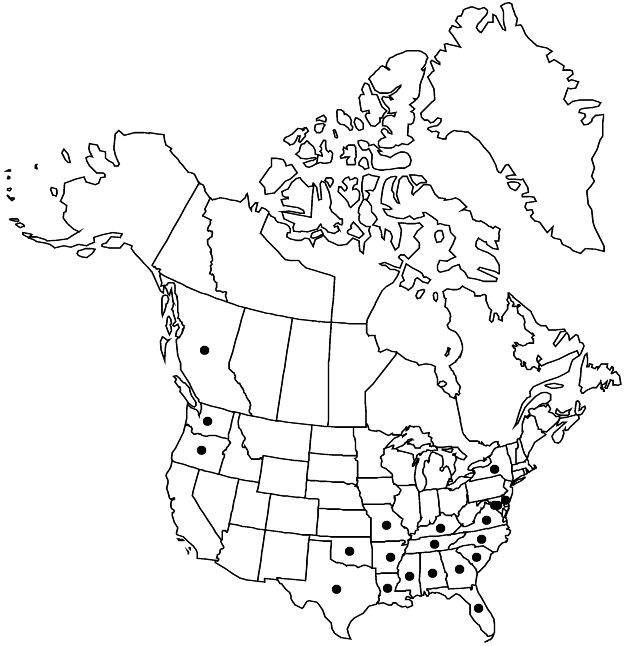Aphanes australis
in N. L. Britton et al., N. Amer. Fl. 22: 380. 1908.
Plants slender, appressed-hairy throughout, hairs usually less than 0.8 mm. Stems ascending or erect, simple or branched, (1–)3–10(–22) cm. Leaves 5–10 mm; stipules overlapping, (2.5–)4–6(–7) mm, divided ca. 1/2 their length, lobes (5–)7–10(–12), on distal nodes oblong, 2–4(–5) times as long as wide; petiole free from stipules in proximal leaves, adnate in distal ones; blade 5 mm, prominently divided into 3 segments, each (1–)2–3(–4)-lobed. Inflorescences opposing leaves, dense, flowers tending to remain hidden. Pedicels less than 1 mm. Flowers (0.8–)1.2–1.3(–1.4) × 0.7–0.8 mm, 1–1.5 mm in fruit; epicalyx bractlets 0–0.1 mm; hypanthium subglobose to ellipsoid, not contracted at apex, not distinctly 8-ribbed, hairy between ribs 2/3–3/4 of length, sometimes glabrescent; sepals connivent, 0.2 mm, long-ciliate. Fruits (0.9–)1.4–1.6(–1.7) mm. 2n = 16.
Phenology: Flowering Mar–May.
Habitat: Fields, sandy places
Elevation: 0–300 m
Distribution

Introduced; B.C., Ala., Ark., Del., D.C., Fla., Ga., Ky., La., Md., Miss., Mo., N.Y., N.C., Okla., Oreg., S.C., Tenn., Tex., Va., Wash., Europe.
Discussion
Plants of Aphanes australis have commonly been misidentified as A. microcarpa (Boisser & Reuter) Rothmaler (or Alchemilla microcarpa Boisser & Reuter), an endemic to the western Mediterranean region. Plants native to other parts of Europe, but misidentified as A. microcarpa were described in 1984 as a new species, A. inexspectata, but this taxon had previously been described by Rydberg as A. australis from plants introduced to the eastern United States (P. Frost-Olsen 1998). Aphanes microcarpa is not present in North America.
Selected References
None.